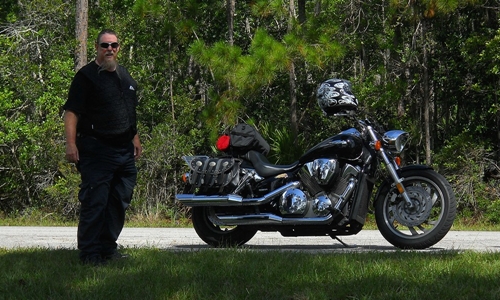Painting
"Making the Invisible, Visible"
|
My entire life as an artist has been impelled by the subliminal suspicion that there must be more to drawing and painting than laboring to duplicate something as precisely as possible on paper or canvas: Get a camera! (I say that tongue-in-cheek and without rancor: I'm also an avid professional photographer.)
When I looked at a landscape or a still life or a flower or a couple arguing I knew that I could make a photograph of that image or that moment or that I could draw it or paint it as precisely—as realistically—as possible, but that my photograph or artwork would not be able to fully convey the energies, the thoughts and feelings, the emotions, the essence of that object or moment. What I wanted was a way to portray the essence that lies behind the physical, objective natures of things. I thought that if I could discover such a method it might enable me to convey a specific subject matter, circumstance, or state of being to the viewer without utilizing the traditional visual cues to do so. Traditional abstract methodology had so far failed me, but then I became aware of the New York School of Abstract Expressionists, Jackson Pollock in particular. The awareness of this particular school of art enabled me, after much study, to discover an action painting technique that has finally allowed me to communicate pure essence without utilizing traditional representational visual cues. And it has proven to be an extremely effective method of artistic communication: a viewer will stand before one of my paintings and experience the energies it possesses, and they will allow their self to feel the emotions which it evokes. Even more exciting is the fact that most times the viewer will, having no realistic or objective visual cues as to my painting's subject matter, nonetheless sense that the painting relates to or represents a specific subject matter or condition. Viewers have stood before my paintings and without knowledge of my intent or the title of a painting they have nonetheless correctly interpreted subject matters as diverse as: the Four Horsemen of the Apocalypse; flowers; roller coasters; sailing ships; and radio waves traveling through the atmosphere, as well as varying emotional states which I have represented on the canvas, all the while having no realistic or objective visual cues from which to draw their accurate conclusions. So at last I am able to abandon traditional realistic tools and paint in a manner which, for me, breathes life into the canvas, and enables me to stir the emotional responses I desire as well as to reveal the essence behind that flower waving in the breeze or that couple's heated argument. What an amazing thing for an artist to be able to do: to be able to Make the Invisible, Visible. |
Photography:
"Preserving the present so that the future
does not wash away the past"
|
As I think most artists are I was hard pressed to formulate a cogent statement about why I make photographs.
What jarred me into recognition as to my real and ultimate reason for making photographs was the day that I returned to a beloved landscape and I discovered that one of my favorite areas that I frequently photographed had been obliterated by the fierce rush of water from a swollen stream. I realized that the things that I love and treasure—landscapes; flowers; even people—can change so as to be unrecognizable or they can be swept away by the tides of Time. And that's when I realized that my ultimate objective with the camera is: "To preserve the present so that the future does not wash away the past." |
My Artistic Journey
|
Why do I create art? Because I have to: my hand found a pencil at an early age and I was instantly pleasurably addicted, in a very literal sense of the word. I could no more not make art than I could successfully quit eating or breathing.
As a young child around the age of four or five I drew well enough that adults would ask if I had traced or freehand drawn my subjects; I had drawn them freehand. As I grew into my pre-teen years I filled reams of paper and many notebooks with drawings as I developed a love for all of the tools of art: pens, pencils, erasers, sharpeners, papers; and I also became a calligrapher and an amateur sign maker. In my early teenage years I became interested in both painting and photography, and I developed just as an intense love of those disciplines as I had for drawing. From an early age I was a student of art, continuously studying everything I could get my hands on, and eventually I studied art formally at Angelo State University and I also graduated from the New York Institute of Photography. As I've grown as an artist over the years one thing that I've learned is that no one ever masters the craft; there's always the possibility to do better, to learn more, and there are also new avenues to explore, new things to try, and refinements to past techniques. And those are the things that make being an artist so frustrating, and so challenging, and so infinitely rewarding. Especially when a person I've never known stands before one of my works of art and it speaks to them and arouses them emotionally, and maybe even inspires enough passion within them that they purchase my art and take it home to live with. Art...it's one of the oldest—and I believe best—forms of communication that there is. |

John and Melissa

Home